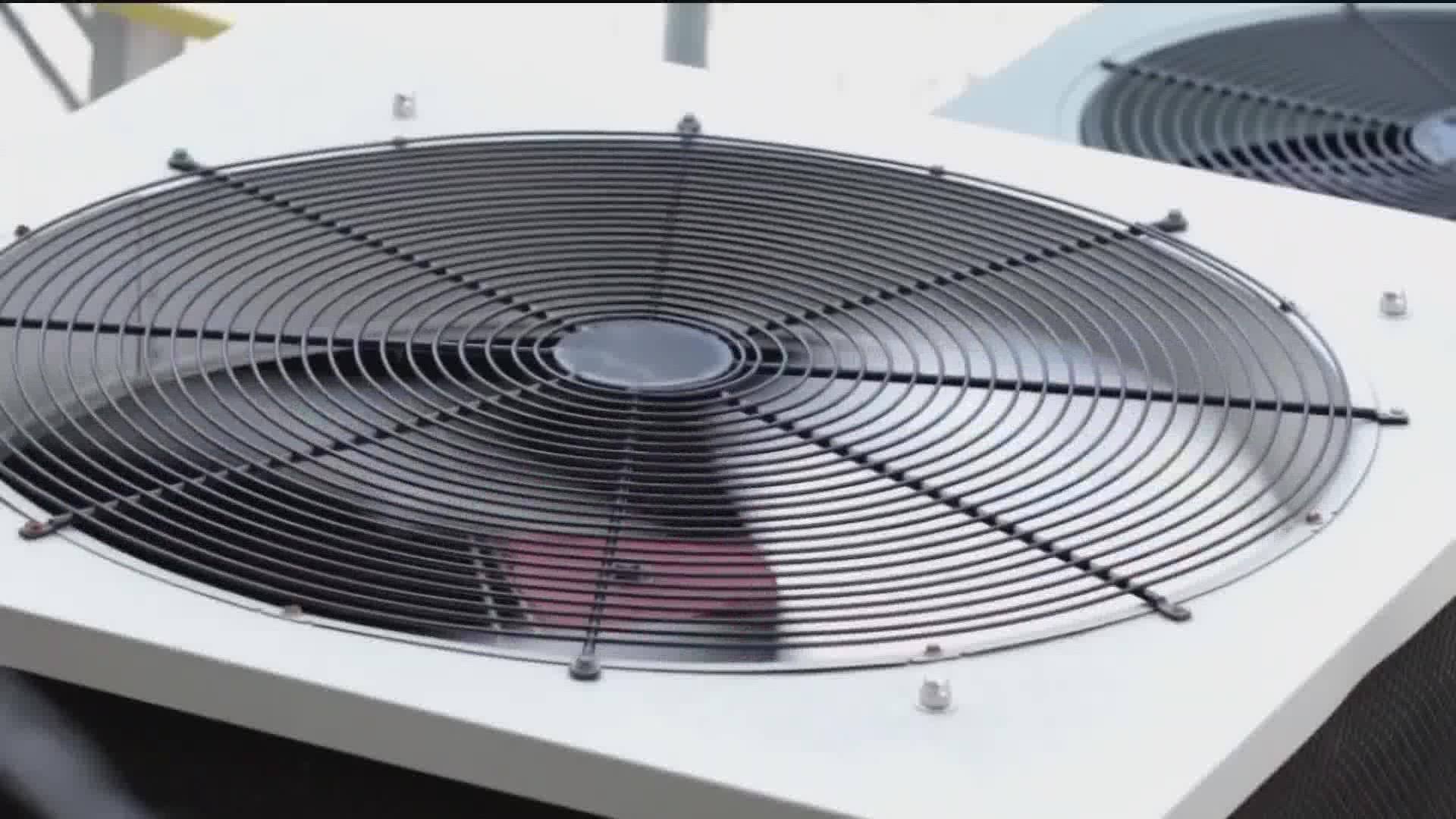SAN DIEGO COUNTY, Calif. — As Southern California enters a ninth straight day of record-setting heat Thursday, the state's power regulators are hoping to continue their streak of avoiding rolling blackouts, asking all residents to conserve electricity during the hours of 3 to 10 p.m., extending the previous Flex Alerts by two hours.
The California Independent System Operator extended a Flex Alert for the eighth consecutive day Wednesday, urging residents to take the following power-saving steps:
-- setting thermostats to 78 degrees or higher;
-- avoiding use of major appliances;
-- turning off unnecessary lights; and
-- avoid charging electric vehicles.
Residents were also advised to pre-cool their homes as much as possible and close blinds and drapes to keep interiors cool.
The voluntary conservation measures have worked so far, as the power stayed on Tuesday despite a record demand for electricity. Just before 6 p.m., the state moved into an Energy Emergency Alert 3, calling for maximum conservation efforts while warning that blackouts could be imminent absent reduced demand.
To drive home the demand, alerts were sent to cell phones across the state urging people to "conserve energy now to protect public health and safety," and warning that "power interruptions may occur unless you take action."
"As the state faces the hottest day in this prolonged, record- breaking heat wave, grid conditions are expected to worsen," according to the power-grid manager. "If needed, ISO could order utilities to begin rotating power outages to maintain stability of the electric grid. If that occurs, consumers should expect communications -- either phone, text or email -- from their utilities notifying them of outage areas and likely durations."
Officials ended Energy Emergency Alert 3 at 8 p.m., declaring "consumer conservation played a big part in protecting electric grid reliability."
If energy reserves were exhausted, the ISO would have instructed utilities to manage rolling blackouts. Utilities make the determination of how best to spread and rotate the outages across their service territory, with the goal of keeping them as short as possible.
By late Tuesday afternoon, electricity demand reached 52,061 megawatts, breaking the record of 50,270 MW set in 2006, according to the ISO.
Consumer and commercial demand response, including Flex Alerts, has been helping to extend tight resources over the past week, with a load reduction of around 1,000 MW for each of the past several days.
Southern California has seen temperatures soar above 100 degrees every day since Aug. 31, with little relief in sight until this weekend.
Thursday's forecast for downtown San Diego called for a highs in the upper 80s, but San Diego County desert areas were expected to reach highs around105.
In San Diego, a minimum temperature of 73 on Tuesday night tied a record set in 1995.
The National Weather Service extended an excessive heat warning until 8 p.m. Friday.
"Strong high pressure to the north will continue the heat wave through Thursday for inland areas, with the heat continuing through Friday for the coast and valleys," according to the NWS. "For next weekend, a weakening tropical system will bring increasing moisture, breezy conditions, and a chance of more widespread showers and isolated thunderstorms. Showers and higher humidity will linger through early next week."
Health officials advise residents to stay indoors with air conditioning whenever possible, drink plenty of fluids and avoid hiking or other strenuous activity in extreme heat.
Children and pets should never be left in unattended vehicles for even one minute.
How to prepare for power outages
Utility officials also recommend you follow these suggestions to help you prepare for blackouts.
- When it comes to food, make your own ice ahead of time, freeze containers of water to keep food cold while your power is off.
- Before the outage begins, try to grab what you need from the refrigerator and limit opening its doors. Food can be kept cold for up to four hours in refrigerators and up to 48 hours in freezers.
- Make sure to turn off unplug electrical appliances or any equipment.
- Keep flashlights in reach, but avoid candles as they can cause fires.
- Most importantly stock up on food supplies for you and your pet.
- Residents are also advised to pre-cool their homes as much as possible and close blinds and drapes to keep interiors cool.
After a power outage
Officials also recommend that you throw away any food that has developed an unusual odor.
You should also restock your emergency kit with fresh batteries, canned foods and other supplies.
Southern California has seen temperatures soar above 100 degrees every day since last Wednesday, with little relief in sight until at least Friday.
Overnight lows are not offering much relief either, staying in the 70s and even in the low 80s in some of the hotter areas.
The National Weather Service extended the excessive heat warning that has been in effect all weekend, which is now set to expire at 8 p.m. Friday.
"Strong high pressure to the north will continue the heat wave through Thursday for inland areas, with the heat continuing through Friday for the coast and valleys," according to the NWS. "For next weekend, a weakening tropical system will bring increasing moisture, breezy conditions, and a chance of more widespread showers and isolated thunderstorms. Showers and higher humidity will linger through early next week."
Health officials advise residents to stay indoors with air conditioning whenever possible, drink plenty of fluids and avoid hiking or other strenuous activity in extreme heat.
Children and pets should never be left in unattended vehicles for even one minute.

